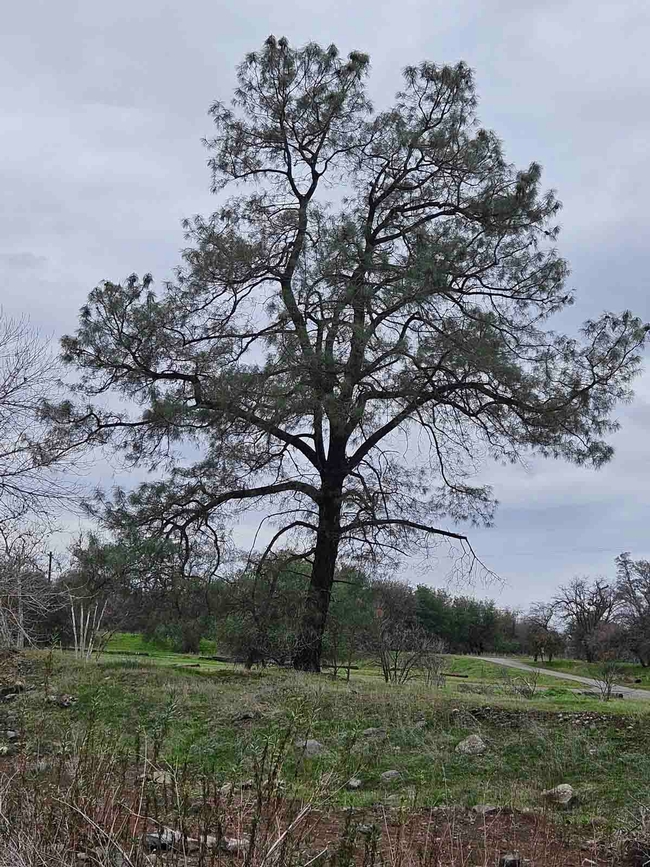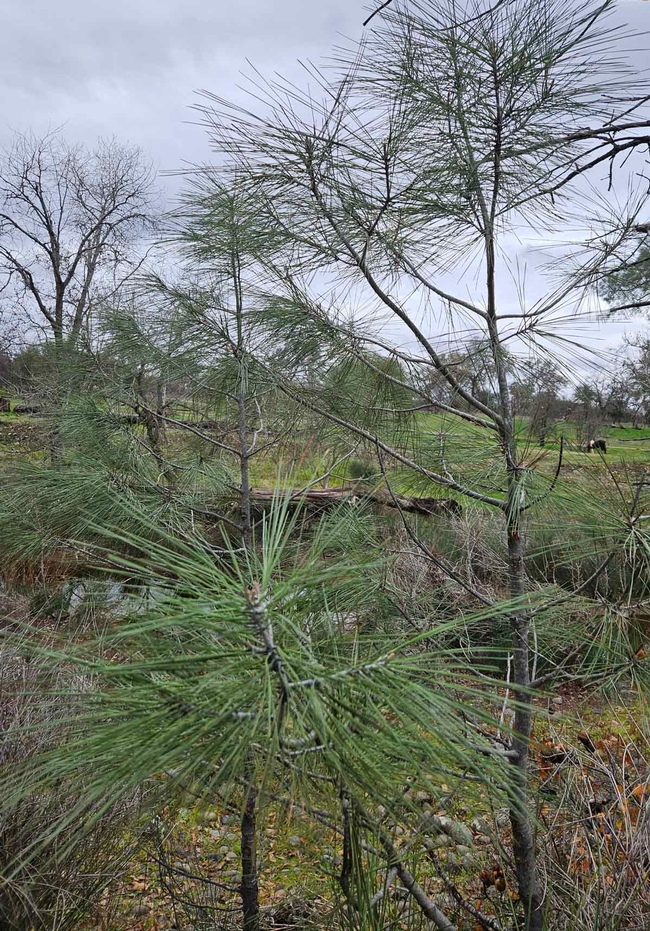[Note: Gray pine (Pinus sabiniana), buckeye (Aesculus californica), and blue oak (Quercus douglasii) are tree species that thrive in rugged local foothill woodland and chaparral habitat. Last edition, we covered the blue oak, and today the gray pine is featured. The final installment will explore the buckeye. All three species rely on adaptive strategies evolved over time allowing them to thrive in their challenging environment.]

But underneath that homely exterior lies a true gem. This tree's many common names testify to its importance: gray pine, California foothill pine, foothill pine, nut pine, bull pine, and ghost pine. Its pejorative historic name, digger pine, is no longer in use. The Maidu named it “towáni” and the Yana called it “c'ala'I.” Its scientific name derives from the English lawyer, naturalist, and writer on horticulture Joseph Sabine (1770 to 1837). Sabine had a lifelong interest in natural history and was an original fellow of the Linnean Society. It was Sabine who was responsible for sending David Douglas on specimen collecting trips, specifically to supply plants to the Royal Horticultural Society Gardens.
We are not certain of the lifespan of the gray pine, because older specimens were cut down by early settlers, but it is believed that these trees can live for over 200 years. When mature, they average from 40 to 80 feet tall. About 15 to 25 feet off the ground, gray pines develop two or more twisted stems that can grow at irregular angles to one another, resulting in a crown that appears open and ragged. Gray pine is self-pruning, and the remaining lowest branches will end up high above the understory. Where soils allow, gray pines can develop a deep taproot, but in hardpan soils their roots are spreading and shallow, and the bark thickens as the tree ages.
The female cones are the largest and heaviest in the entire pine family. They could be mistaken for a football lying amongst shed needles, as they can be up to one foot long, and when dry are dull orange/brown. A green cone can weigh over two pounds. That, and their sharp spines, warn one to be alert while treading under this tree!

Surviving Drought and Fire
In an evolutionary adaptation to the dry hot summers of a Mediterranean climate, the gray pine has thin, gray needles up to 12 inches long that help it deflect heat and retain water. Surprisingly, this species is not fire resistant. On the contrary, it is highly flammable: its needles contain ether extracts; its wood, bark, cones, and needle sheaths all contain pitch; and its trunk often is coated with resin that has dripped from wounds. Its fire survival strategy lies in two specific adaptations. First, large trees will better survive moderate-severity fires because the thickened bark of mature trees and the self-pruned trunks with high branching limbs are best able to avoid fatal scorching. Second, seed regeneration is actually favored post-fire. As noted by the USDA, fire creates a receptive “bare mineral soil seedbed, and heat scarification of the woody seed coat increases germination rates.”
Native American Uses
For California's native peoples, the gray pine was (and still is) a nutritional jackpot! Pine nuts are densely caloric, loaded with protein, easy to harvest, and store well for long periods. While many of California's pines provided food to native populations, the nuts of the gray pine were the most highly valued. They could be eaten raw, parched in baskets, and steamed in earth ovens. They were pounded into flour that was made into butter, soup, or bread; mixed with meal made from other dried seeds; and combined with dried salmon. In spring, green cones were roasted to yield a syrupy treat.

Crooked, ragged, and awkward as the gray pine may appear, its ability to thrive under environmental hardship, and its value to native peoples' survival make it an ecological and cultural champion. After all, handsome is as handsome does.
UC Master Gardeners of Butte County are part of the University of California Cooperative Extension (UCCE) system. To learn more about us and our upcoming events, and for help with gardening in our area visit our website. If you have a gardening question or problem, email the Hotline at mgbutte@ucanr.edu or leave a phone message on our Hotline at 530-552-5812. To speak to a Master Gardener about a gardening issue, or to drop by the MG office during Hotline hours, see the most current information on our Ask Us section of our website.